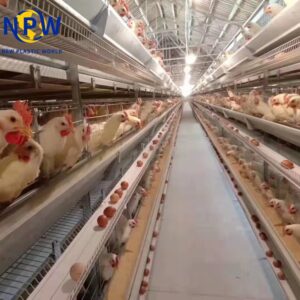Maintaining a strong hygiene and epidemic prevention system is paramount for chicken farms, as it safeguards poultry health, boosts productivity, curbs disease transmission, and ensures food supply safety. Below is a comprehensive, step-by-step guide to establishing an effective system.

1. Farm Layout and Design
A well-planned physical layout minimizes cross-contamination and streamlines disease management.
- Zoning: Divide the farm into distinct zones, including areas for laying hens, broilers, feed storage, waste disposal, and quarantine. Restrict access to each zone to prevent pathogen movement.
- Ventilation: Install efficient airflow systems to reduce humidity, a key factor in fungal and bacterial growth.
- Drainage: Implement a robust drainage system to avoid standing water, which serves as a breeding ground for bacteria.
2. Biosecurity Protocols
Biosecurity is the foundation of disease prevention, blocking the entry and spread of infectious agents.
- Personnel Management:
- Training: Educate workers on hygiene practices, biosecurity importance, and early detection of poultry disease symptoms.
- Protective Gear: Mandate dedicated workwear (clothes, boots, gloves, masks) and place disinfectant stations at entry/exit points.
- Access Control: Limit farm access to essential personnel only, requiring strict disinfection (foot baths, clothing changes, hand sanitization).
- Visitor Logs: Record all visitors, provide protective gear, and restrict them to designated areas.
- Animal Movement Controls:
- Quarantine for New Birds: Isolate new arrivals for 2–3 weeks before integrating them into the main flock to screen for hidden diseases.
- Wildlife Barriers: Use netting or fencing to keep wild birds and animals—potential disease carriers—away from poultry.
- Transport Sanitization: Thoroughly clean and disinfect vehicles before and after transporting chickens.
3. Sanitation and Disinfection
Regular cleaning and disinfection reduce pathogen loads and prevent outbreaks.
- Routine Cleaning: Daily removal of manure, feathers, and other organic waste from poultry houses, feed bins, water containers, and equipment.
- Targeted Disinfection: Use veterinary-approved disinfectants on surfaces and infrastructure, especially after cleaning or during suspected outbreaks.
- Hygiene Stations: Place foot baths at all entry/exit points and provide hand sanitizers for workers and visitors.
- Water Safety: Disinfect water sources (e.g., via chlorination or UV treatment) to prevent waterborne diseases.
4. Waste Management
Proper waste handling prevents pathogen accumulation and environmental contamination.
- Manure Handling: Remove manure regularly and store it in a designated area for composting or safe disposal.
- Composting: Compost manure to eliminate pathogens, turning it into a safe agricultural byproduct.
- Dead Bird Disposal: Promptly remove and dispose of dead birds via incineration or burial, following local regulations.
5. Disease Surveillance and Monitoring
Early detection is critical for containing outbreaks.
- Veterinary Partnerships: Collaborate with a veterinarian for regular health checks, blood tests, and vaccination oversight.
- Flock Inspections: Monitor for signs of illness (e.g., unusual mortality, reduced egg production, respiratory/digestive issues) and track common diseases like avian influenza or Newcastle disease.
- Environmental Monitoring: Regulate temperature and humidity, as extreme conditions stress poultry and weaken immunity.
- Record-Keeping: Maintain detailed logs of flock health, vaccination schedules, and treatments to identify patterns and guide responses.
6. Vaccination and Preventive Care
Vaccination is a cornerstone of disease prevention.
- Custom Vaccination Schedules: Work with veterinarians to develop plans targeting region-specific threats (e.g., Marek’s disease, infectious bronchitis, avian influenza).
- Coordinated Protocols: Align vaccination with biosecurity—for example, isolating newly vaccinated birds until immunity develops.
- Stress Support: Administer probiotics or vitamins during high-stress periods (e.g., transport, weather changes) to boost immunity.
7. Feed and Water Safety
Contaminated feed or water can trigger disease outbreaks.
- Feed Storage: Store feed in clean, dry, pest-free areas to avoid mold, bacteria, or mycotoxin contamination.
- Water Quality: Regularly test and disinfect water supplies to ensure freshness and safety.
- Pest Control: Implement integrated measures to eliminate rodents, flies, and insects that contaminate feed/water.
8. Emergency Response Plans
Prepare for outbreaks to minimize losses.
- Isolation Zones: Designate areas to separate sick birds from healthy ones.
- Quarantine Protocols: Establish farm-wide quarantine procedures during outbreaks to prevent spread to neighboring farms.
- Rapid Notification: Create a system to alert veterinarians, authorities, and staff immediately upon suspecting an outbreak.
- Disinfection Guidelines: Define clear steps to sanitize equipment, vehicles, and facilities during crises.
By integrating these measures, chicken farms can build a resilient system that protects poultry health, ensures food safety, and sustains long-term productivity.

